Our last day in Chachapoyas and time to visit what’s billed as the Kuelap Fortress, high atop a mountain a couple of hours from town. As it turns out, it’s not so much a fort as a fortified town, estimated to have been built in the 6th century AD, and continually occupied right on through the Incan Empire period, until about 1570.
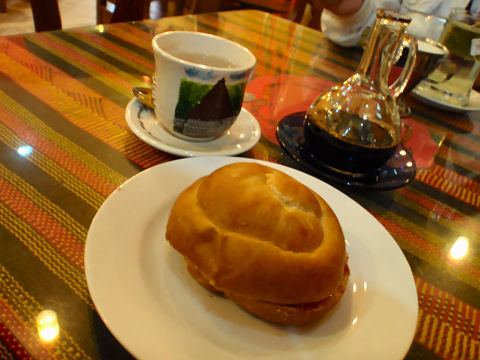
But first, a stop in at a local cafe on the Plaza de Armas for a marmalade sandwich (I ordered butter, but apparently my mantequilla sounds like their mermelada, or, our waitress just screwed up), and a café americano, which here turned out to be a café pasado, albeit fancily served in a chemistry beaker.
Then, into the van, new set of faces this time, we’d overlapped with two different groups, and a 2½ hour drive out into the hills.
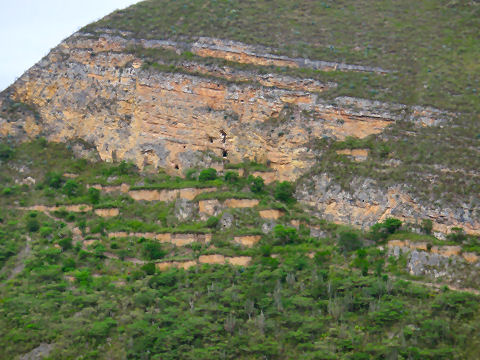
Our first stop, about 40 minutes in, an observation area looking out over the not well known Macro “towers” – what looks like just a hill is honeycombed with man-made caves, most with little rounded walls in front of them and each of which was a dwelling and/or burial site. There are, apparently, thousands of them in this hill, and at one time some 12-15,000 people lived there.
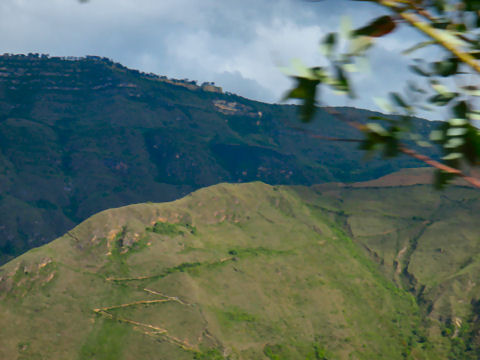
Our first view of Kuelap, perched high atop the mountain.
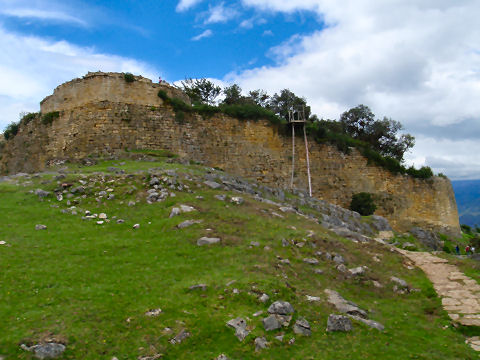
A short walk from the parking area, a mere 20 minutes and no steep hills, brought us to the south end of the city.
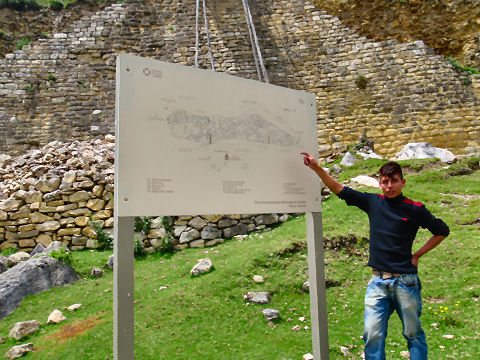
Our guide, Manuel, a local anthropology or history student (it wasn’t clear), shows us the site map before we enter. The town held 420 homes, a watchtower and temple.
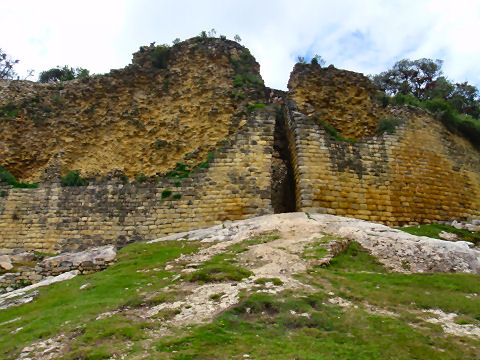
The main entrance.
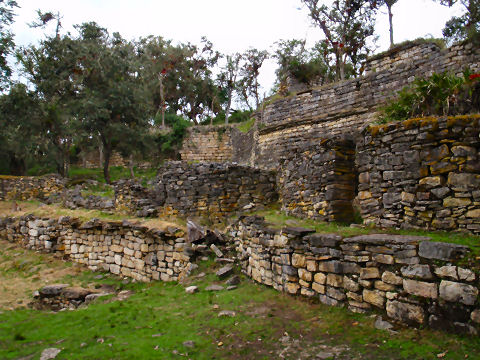
Some of the terraces within the walls, the round structures are the bases of the homes, each roughly 8 meters across.
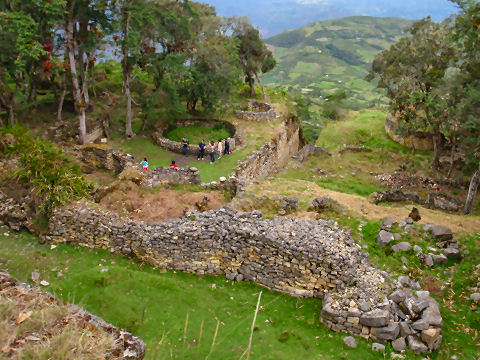
Looking down from an upper terrace on another tour group just entering.
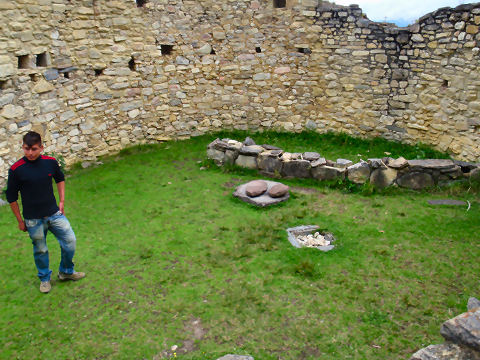
Manuel shows us the best preserved of the homes, with the walls nearly intact at full height of 4.5 meters. The kitchen has what amounts to a counter area, a grinding stone setup, and a pit, in which the bones of deceased family members were kept.
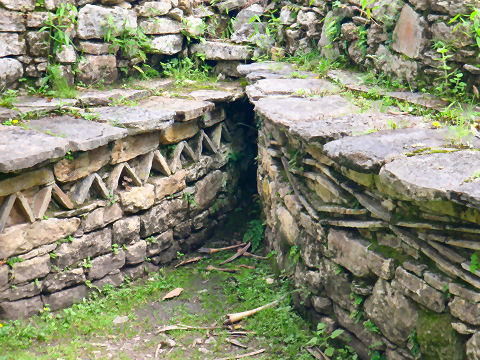
A half dozen of the homes are decorated with various icons that are believed to represent spiritual powers, and that these were, perhaps, the homes of the shamans.
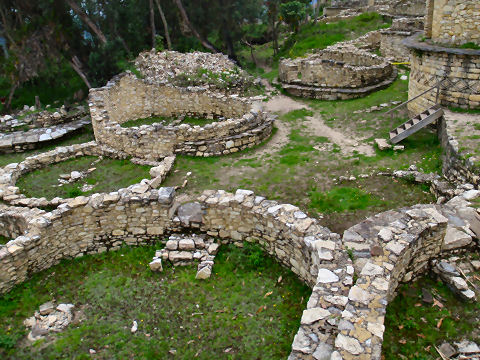
Another look down at a series of homes.
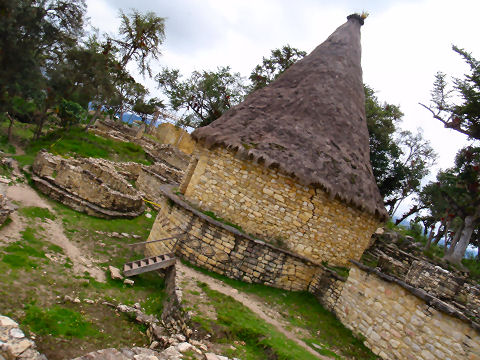
This is a reconstruction of what it is believed the homes looked like.
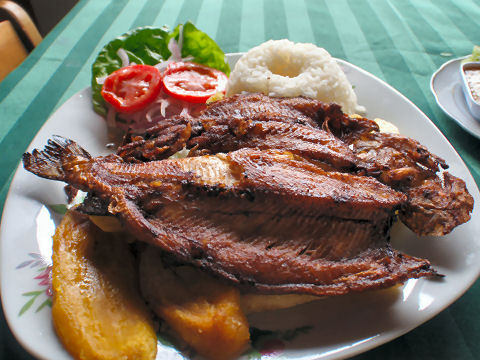
We return to the closest village for an unfortunately awful lunch of deep-fried whatever – this a trout, there were other options, all greasy and cooked far past the point they should have been.
We headed back to Chachapoyas where we gathered up our belongs, relaxed a little while and then met up again with Rolando who escorted us to the bus station and our overnight return, direct to Trujillo.